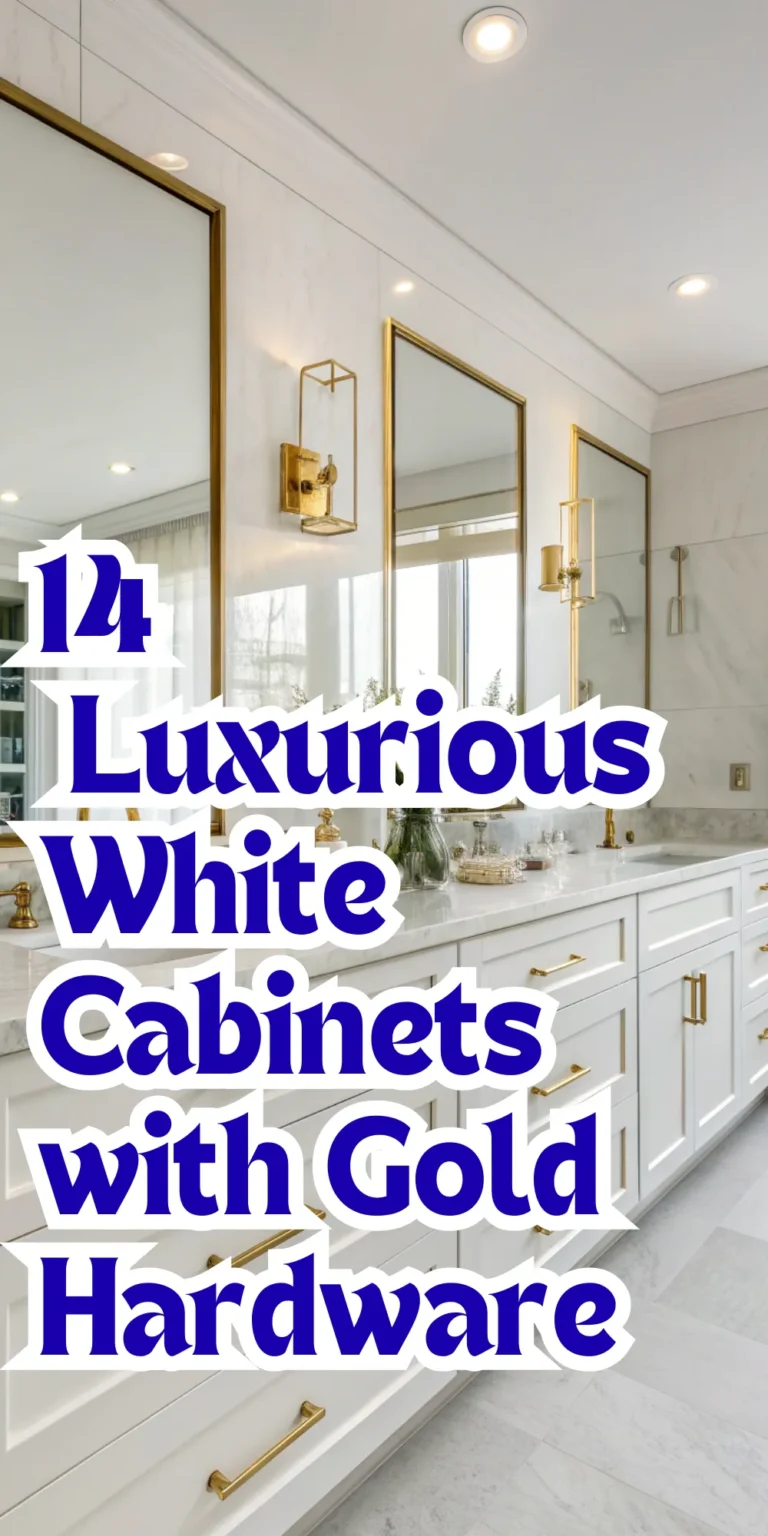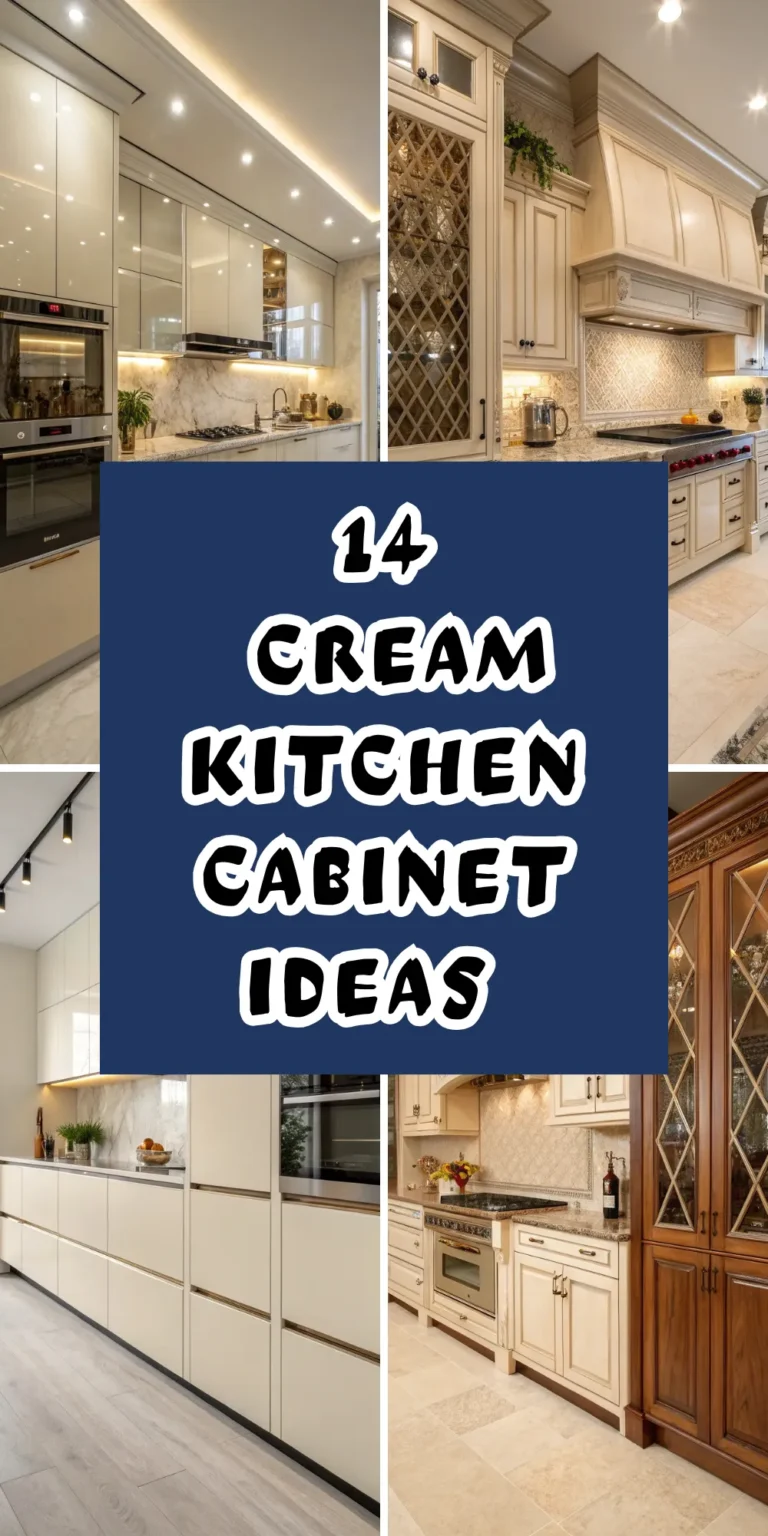16 White Kitchen with Wood Accents for Warm Modern Style
White kitchens are timeless, but adding wood accents takes them from stark and cold to warm and inviting. This winning combination creates the perfect balance between clean modern design and cozy natural elements that make your kitchen feel like the heart of your home.
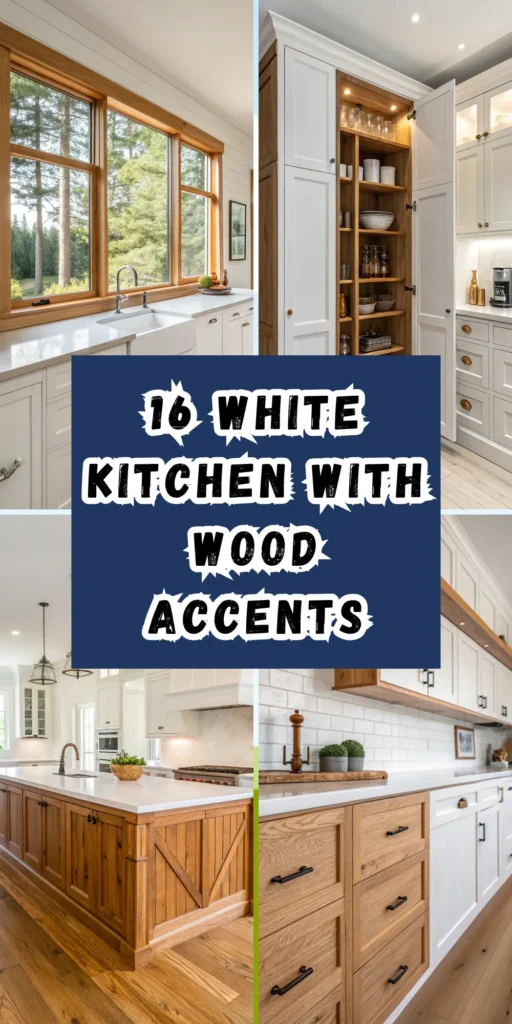
Whether you’re planning a full renovation or just want to refresh your existing space, wood accents can transform an all-white kitchen into something truly special. From butcher block countertops to floating shelves, these natural elements add texture, warmth, and personality without overwhelming the clean aesthetic you love.
Let’s explore 16 beautiful ways to incorporate wood accents into your white kitchen for a look that’s both contemporary and comfortable.
Butcher Block Countertops for Natural Warmth
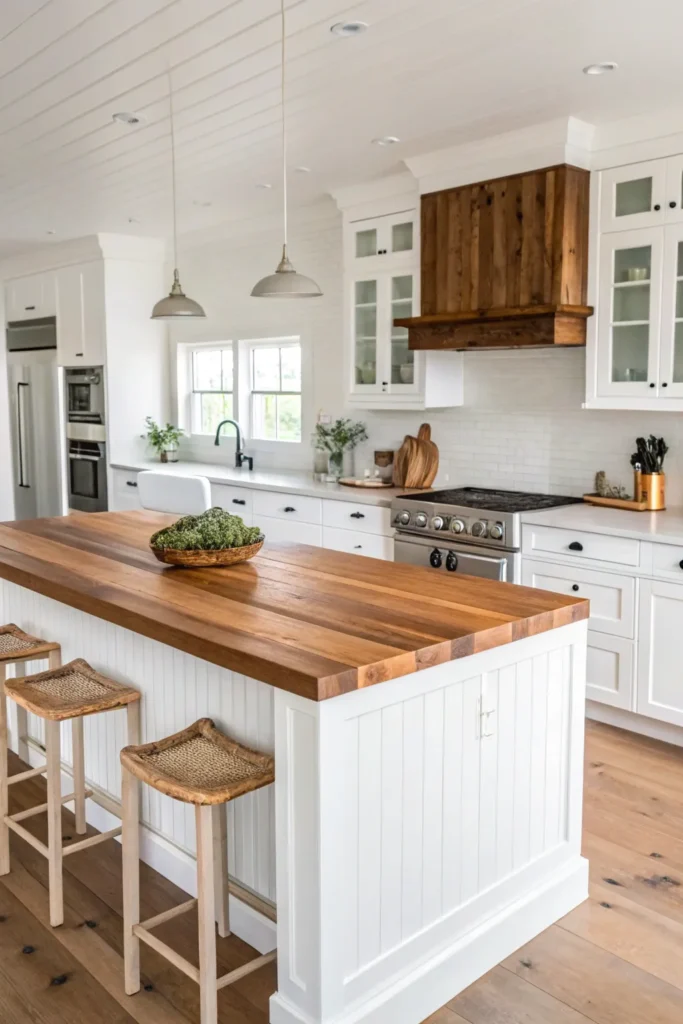
Why it works: Wood countertops instantly soften the hard lines of white cabinets and create a welcoming workspace.
How to do it: Choose durable hardwoods like maple, oak, or walnut. Sand, seal, and maintain regularly with food-safe oil to prevent stains and water damage.
Who benefits: Home cooks who want a warm, natural surface that’s also functional for food prep.
Pro tip: Use butcher block on your island while keeping quartz or marble on perimeter counters for the best of both worlds.
Open Wood Shelving Instead of Upper Cabinets
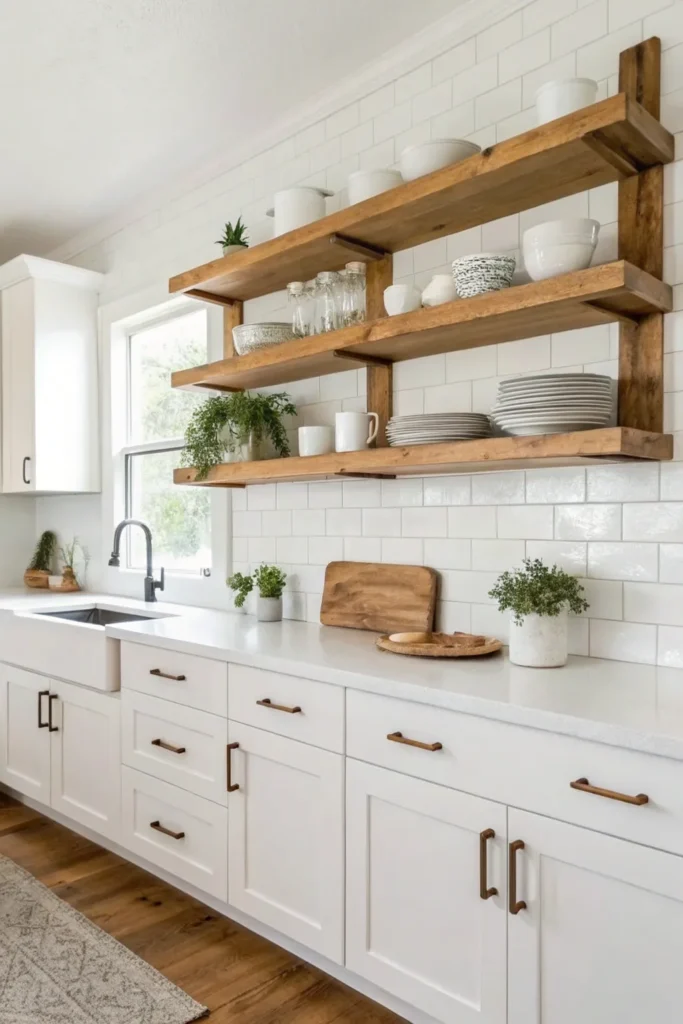
What makes it smart: Floating wood shelves create an airy feeling while adding natural texture and display space.
Implementation: Install sturdy wood shelves in oak, pine, or reclaimed lumber. Style with white dishes, plants, and everyday essentials for a lived-in look.
Perfect for: Small kitchens that need to feel more spacious or anyone wanting to show off beautiful dishware.
Styling tip: Mix books, plants, and kitchen items for shelves that look curated but not overly perfect.
Wood Kitchen Island Base
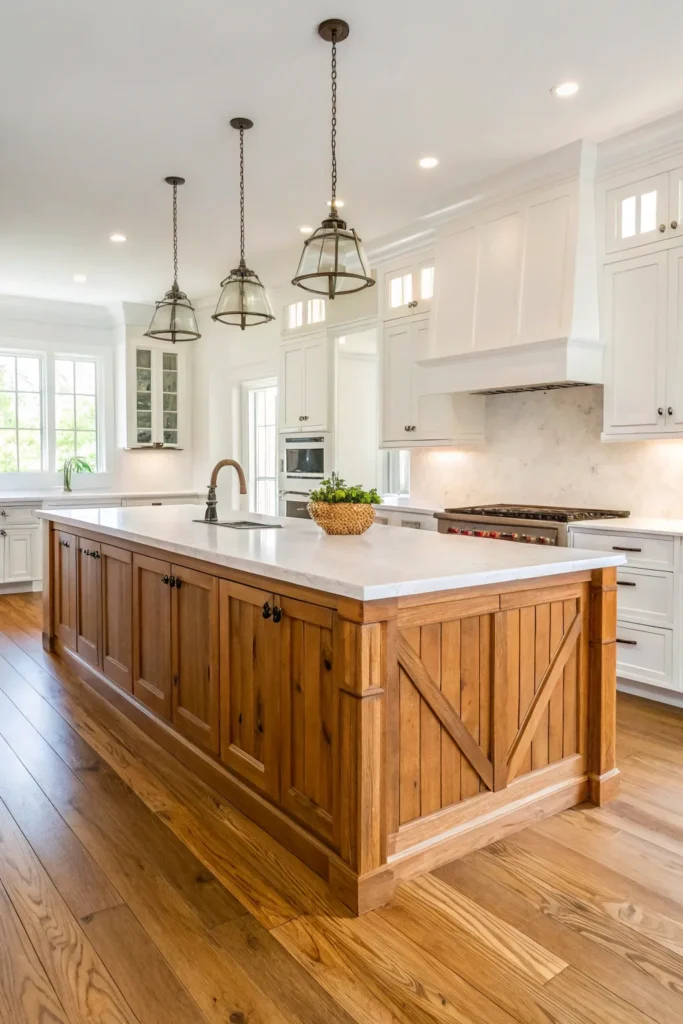
The benefit: A wood island base creates a furniture-like focal point that anchors your white kitchen.
Steps: Use natural wood stain or paint the base in a warm wood tone. Pair with white countertops and keep the rest of the kitchen crisp and clean.
Best for: Large kitchens with space for a statement island that can handle bold contrast.
Pro tip: Match the wood tone to your flooring for a cohesive look throughout the space.
Reclaimed Wood Accent Wall
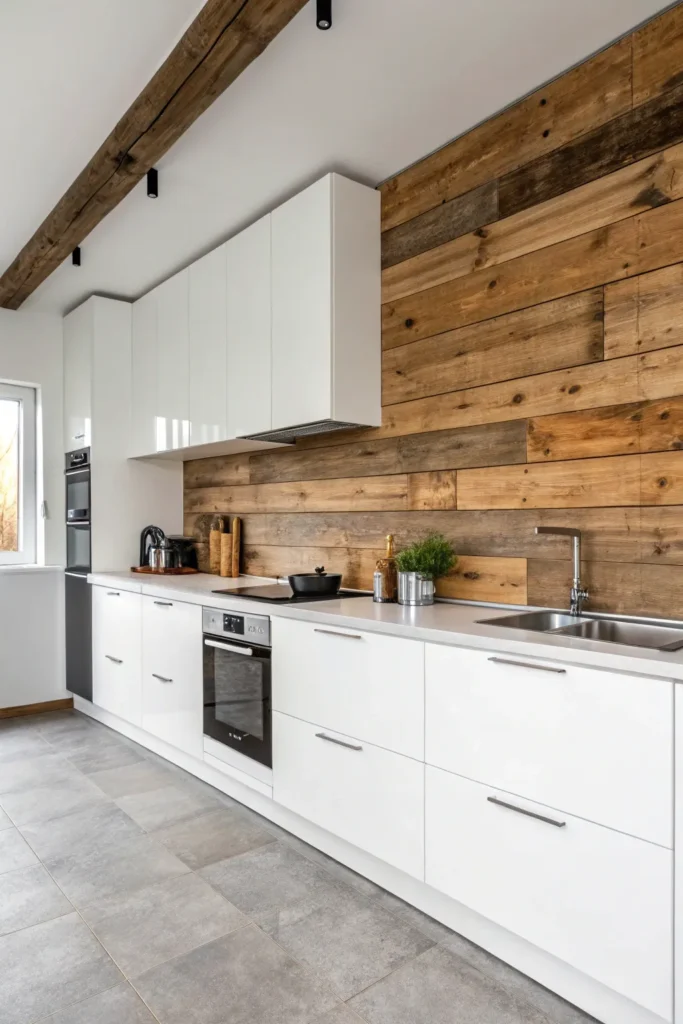
Why try this: A wood accent wall behind your stove or sink adds dramatic texture without overwhelming the space.
Implementation: Install reclaimed barn wood, shiplap, or wood planks on one focal wall. Keep it sealed and protected from cooking moisture and heat.
Who it helps: Kitchens that feel too sterile or need more visual interest and personality.
Note: Ensure proper ventilation and heat protection if placing behind the cooktop area.
Wood Bar Stools for Seating Warmth

What’s great about it: Natural wood bar stools soften the look of white counters and add comfortable, organic shapes.
How to choose: Pick stools with wood seats, backs, or legs that complement your other wood elements. Consider cushions for extra comfort.
Perfect for: Kitchen islands or breakfast bars where you want casual, inviting seating.
Bonus: Much easier to change than built-in elements if you want to update your look later.
Wood Range Hood Cover
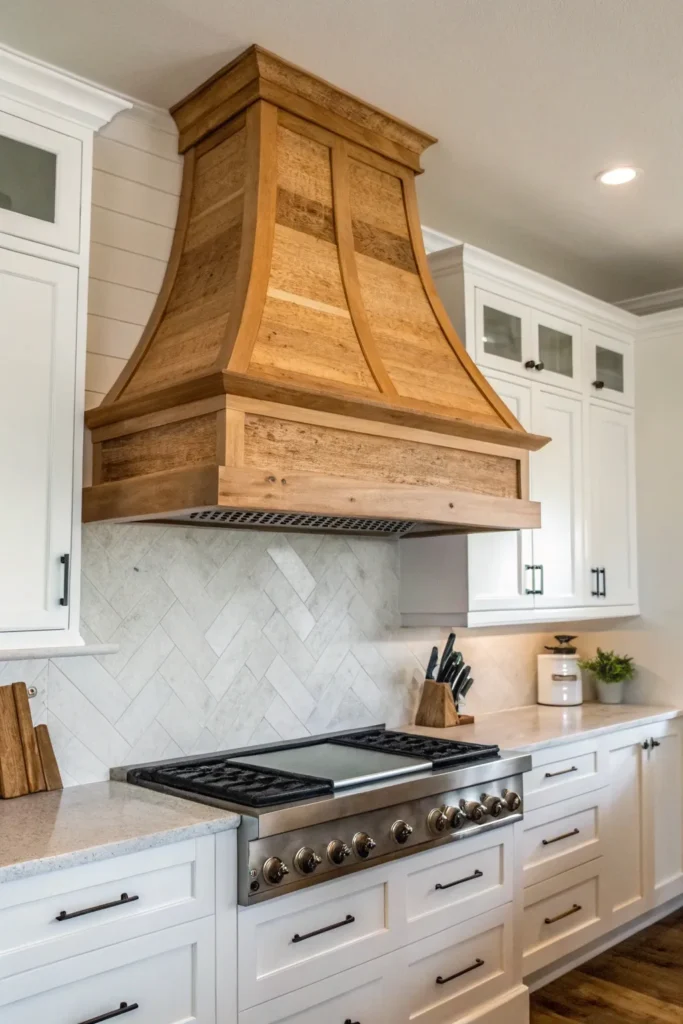
Why it works: A custom wood range hood creates a stunning focal point that feels both modern and rustic.
Steps: Build or buy a wood hood cover that fits over your existing range hood. Use materials that can handle heat and moisture from cooking.
Best for: Kitchens wanting a custom, high-end look without the cost of replacing all cabinets.
Pro tip: Paint the inside white to keep the clean aesthetic while showing wood only on the exterior.
Mixed Wood and White Cabinet Doors

The advantage: Combining wood cabinet doors with white ones creates visual interest and breaks up a monotonous look.
Implementation: Use wood cabinet doors on your island or lower cabinets while keeping uppers white. Or mix them throughout for a more eclectic feel.
Who benefits: Anyone wanting a custom look that’s more interesting than all-white or all-wood cabinets.
Styling tip: Keep hardware consistent across both wood and white cabinets for a cohesive appearance.
Wood Ceiling Beams
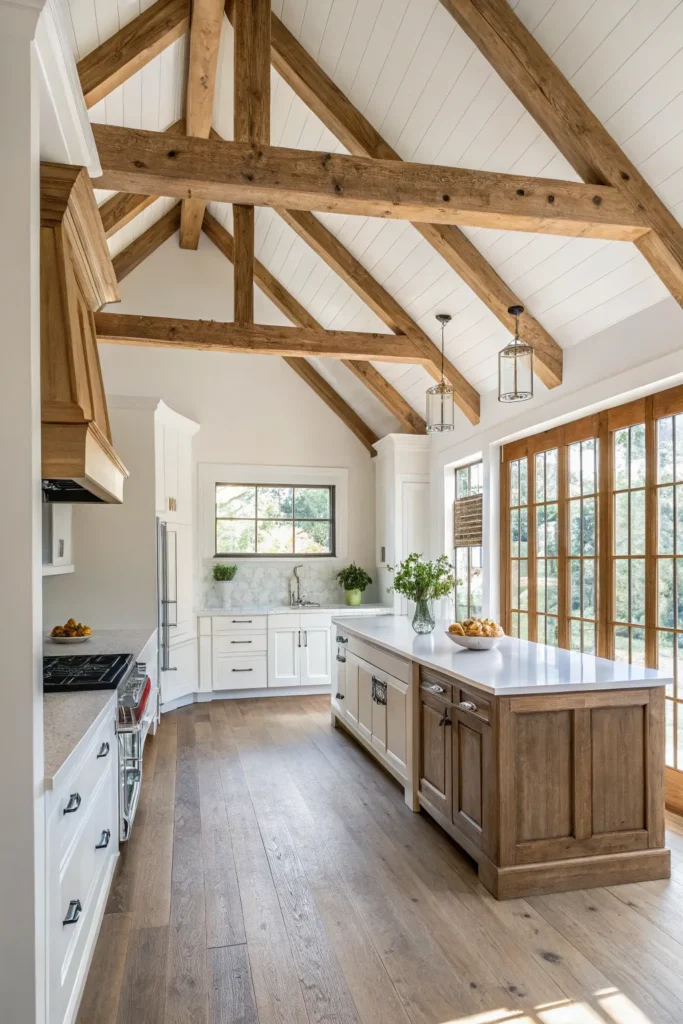
What makes it work: Exposed wood beams add architectural character and draw the eye upward in white kitchens.
How to do it: Install real wood beams or faux wood alternatives. Stain them in natural tones that complement your other wood accents.
Perfect for: Kitchens with high ceilings that need more visual weight and character at the top.
Pro tip: Use lighter wood tones to keep the space feeling open, or go darker for more drama.
Natural Wood Flooring
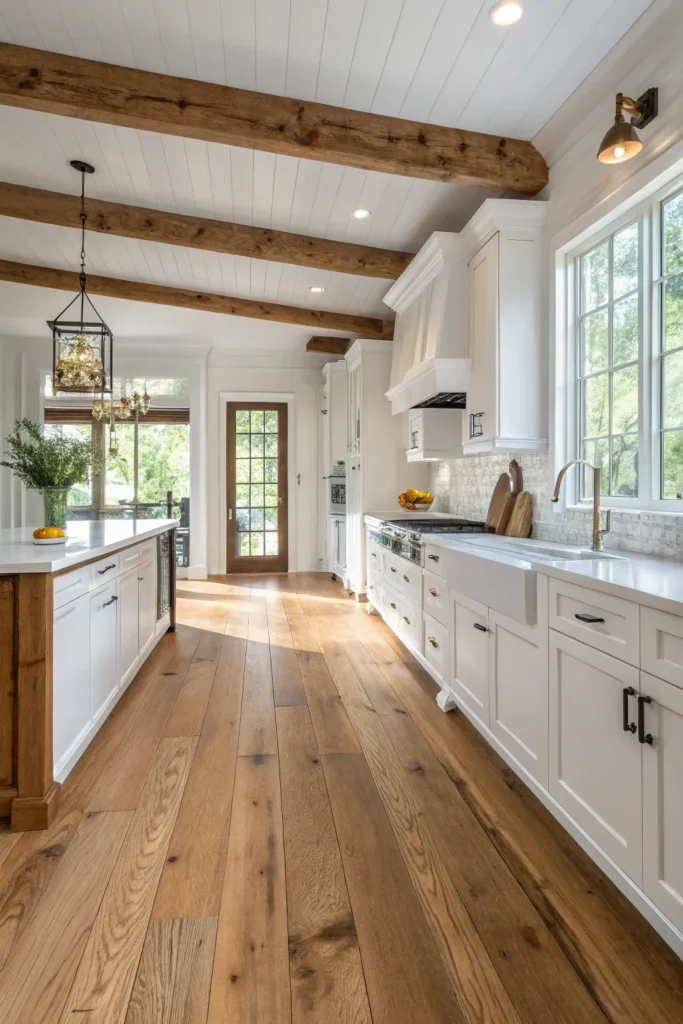
Why it’s smart: Wood floors provide the perfect foundation for white cabinets and create flow between kitchen and living areas.
Steps: Choose durable hardwood species like oak or hickory. Consider wider planks for a more modern look, or traditional strips for classic appeal.
Best for: Open floor plans where you want consistency between spaces and natural warmth underfoot.
Bonus: Wood floors are timeless and work with many different design styles as your tastes change.
Wood Window Trim and Casings
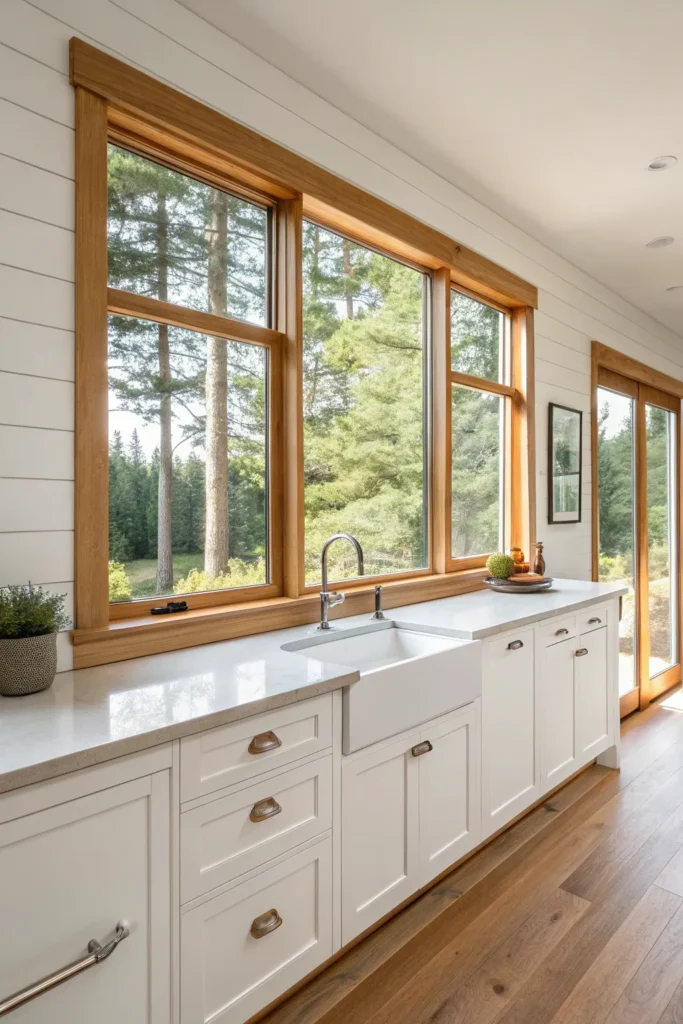
The benefit: Natural wood trim around windows adds warmth and frames beautiful views from your kitchen.
Implementation: Replace painted trim with natural wood stain or add wood trim over existing painted versions. Keep it simple and clean-lined.
Who it helps: Kitchens with great natural light that want to emphasize their windows and outdoor connections.
Pro tip: Match trim wood to your flooring or other major wood elements for the most cohesive look.
Wooden Cutting Board Collection Display
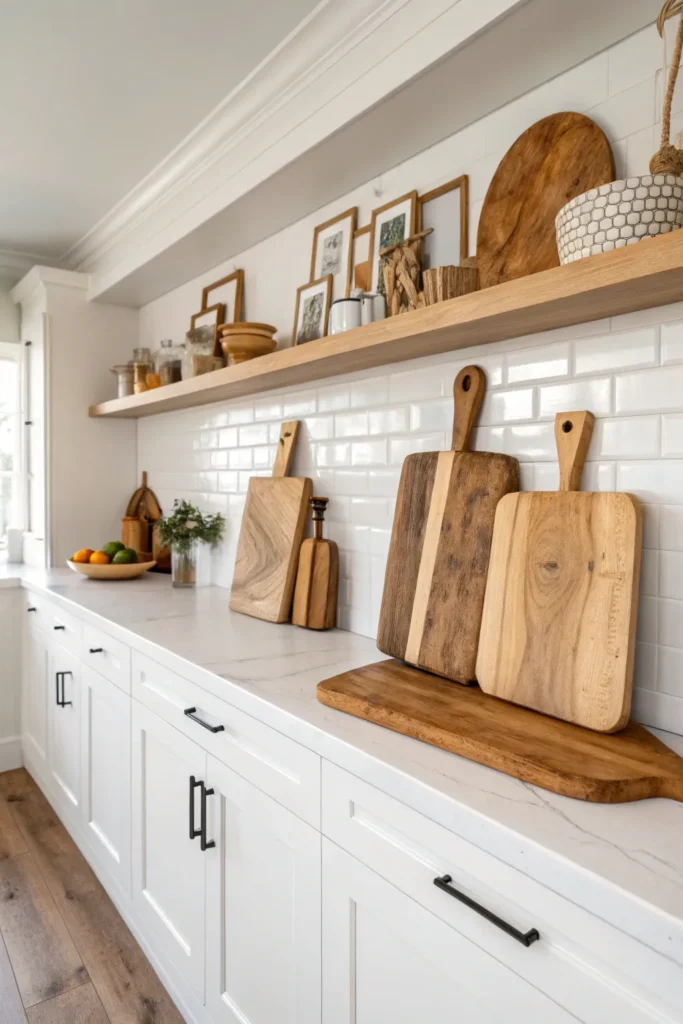
What’s great about it: A collection of beautiful cutting boards serves as functional art that adds wood texture.
How to style: Display various sizes and wood types on open shelves or lean them against backsplashes. Use them for serving and food prep.
Perfect for: Renters or anyone wanting to add wood accents without permanent changes.
Styling tip: Mix different wood grains and sizes for visual interest, but keep the overall collection curated.
Wood Backsplash Accent
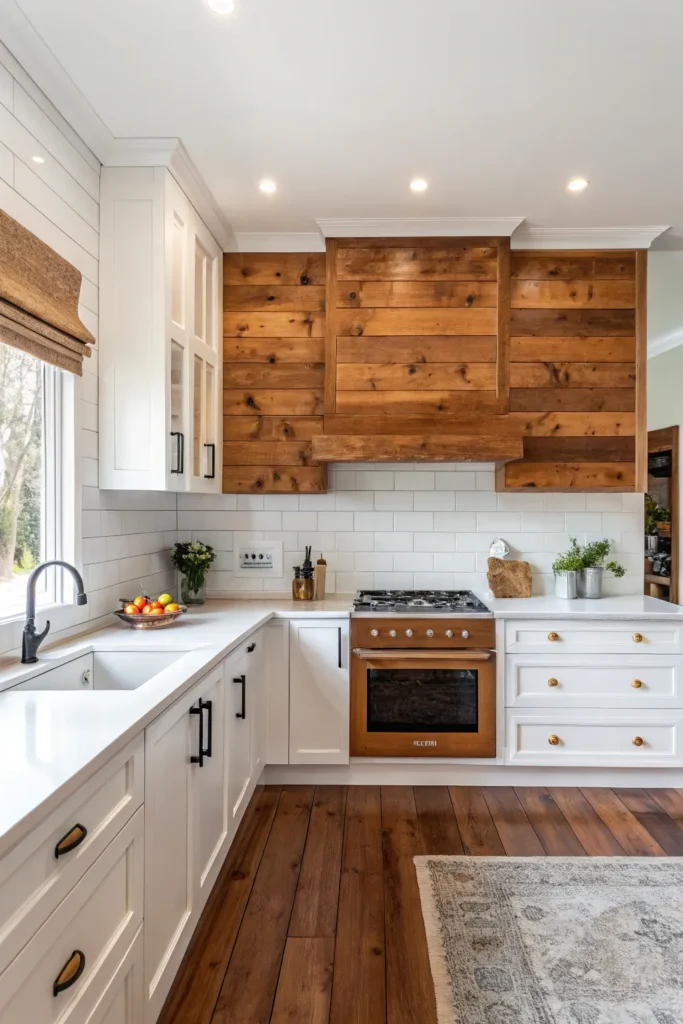
Why try this: Wood backsplash sections create unexpected texture while staying practical for cooking areas.
Steps: Use sealed wood planks or wood-look tile in areas away from direct water and heat. Combine with traditional tile for the best functionality.
Best for: Creative homeowners wanting unique design elements that still work practically.
Note: Requires careful sealing and maintenance – consider wood-look porcelain tile for easier upkeep.
Natural Wood Cabinet Hardware
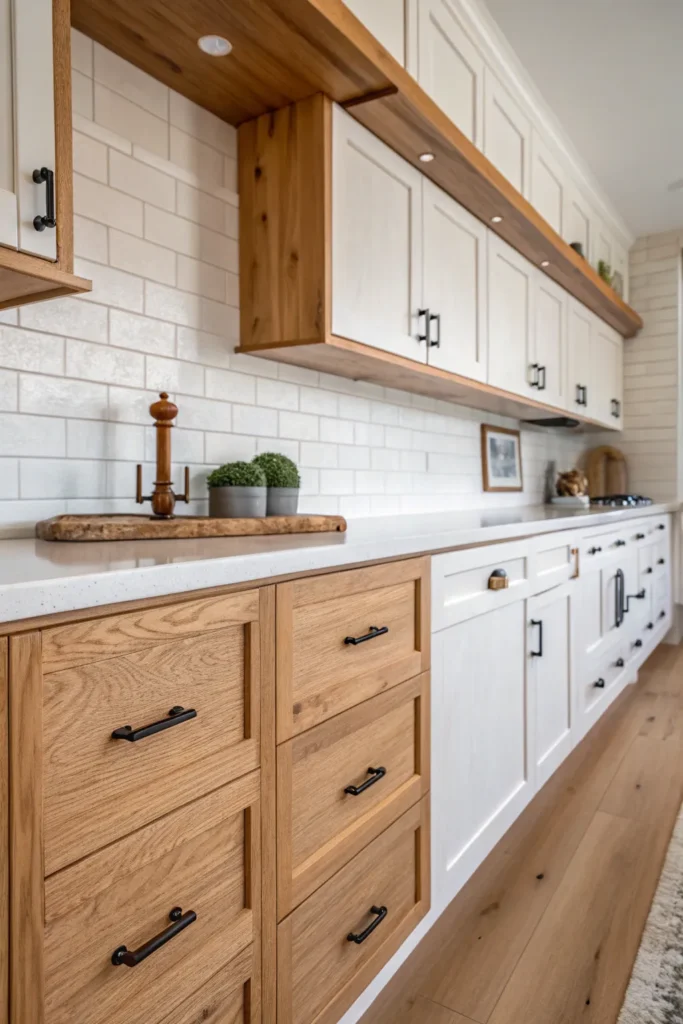
What makes it work: Wood cabinet knobs and pulls add subtle warmth without major renovation costs.
Implementation: Choose handles in natural wood tones or wood and metal combinations. Keep them simple and well-crafted for a quality look.
Who benefits: Anyone wanting to warm up their white kitchen with small, affordable changes.
Pro tip: Test different wood tones against your white cabinets to find the most flattering combination.
Wood Dining Table in Open Kitchen
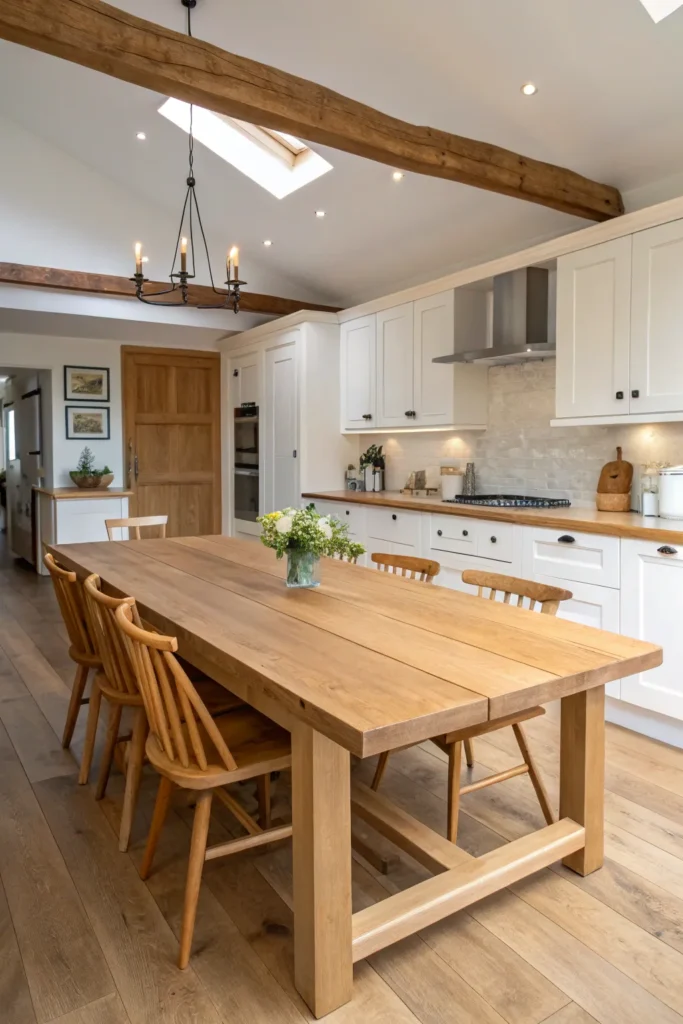
The advantage: A natural wood dining table extends the kitchen’s warmth into adjacent eating areas.
How to choose: Pick a table that complements your kitchen’s wood tones and scale. Consider extending or drop-leaf options for flexibility.
Perfect for: Open floor plans where kitchen and dining areas flow together visually.
Bonus: Easier to change than built-in elements and provides flexibility for entertaining and daily use.
Wood Pantry or Cabinet Interiors
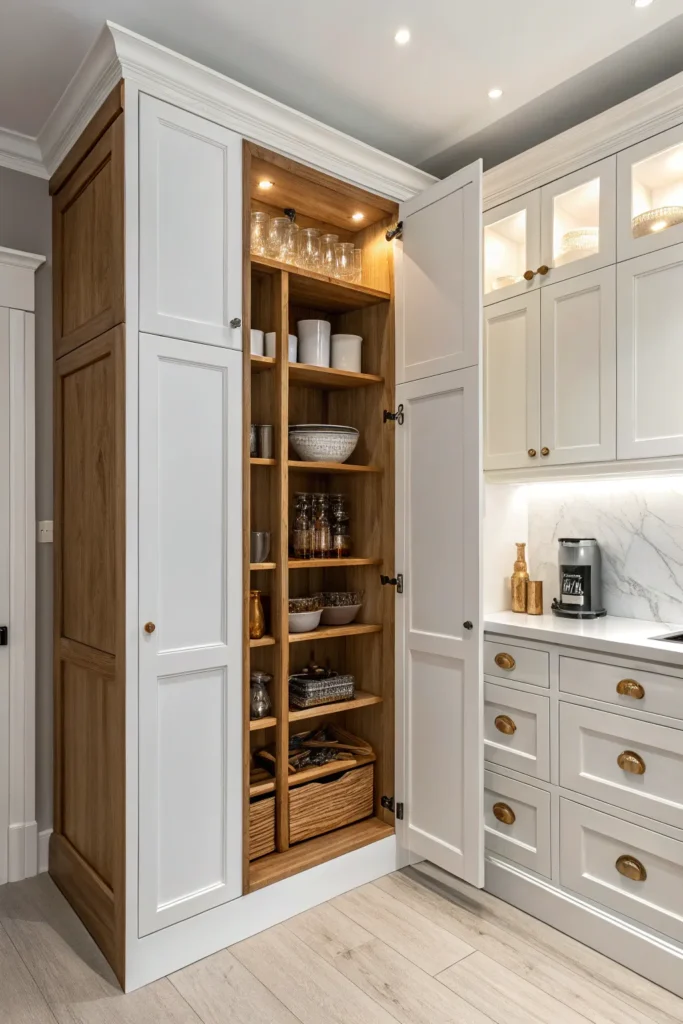
Why it’s smart: Wood cabinet interiors create beautiful surprises when doors are opened and add luxury touches.
Steps: Install wood shelving inside white cabinets or paint existing shelves with wood-tone paint. Focus on frequently opened cabinets for maximum impact.
Best for: Detail-oriented homeowners who love subtle luxury touches that guests might discover.
Pro tip: Use lighter wood tones to keep interiors bright, or add LED strip lighting for better visibility.
Wood Light Fixture Accents
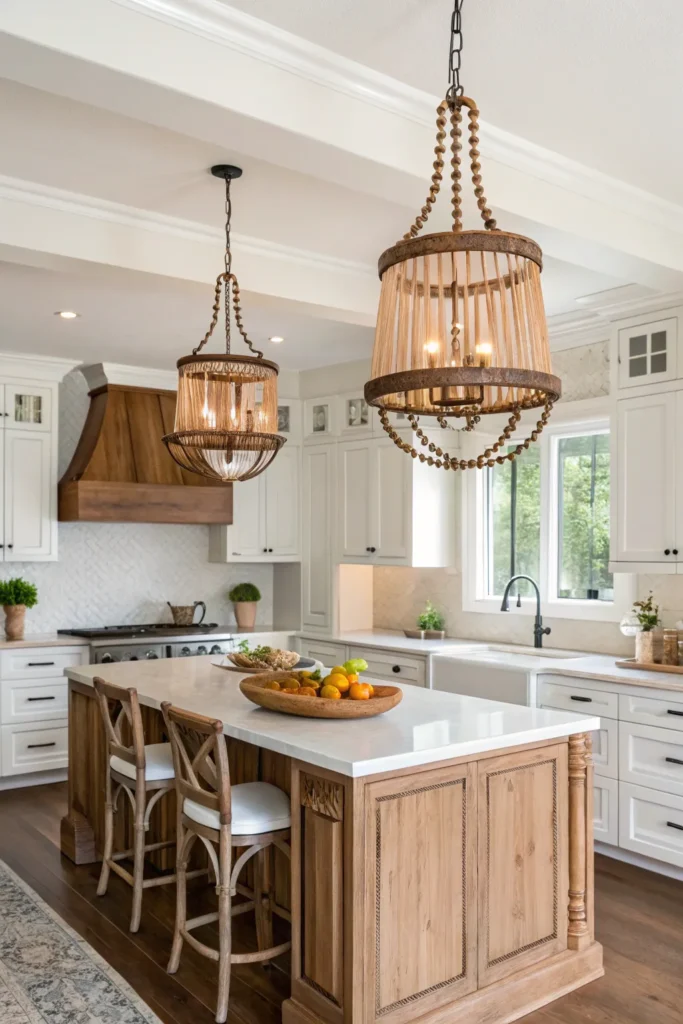
What’s great about it: Pendant lights or chandeliers with wood elements tie together all your other wood accents beautifully.
Implementation: Choose fixtures that combine wood with metal or glass. Consider wood bead chandeliers, wood and iron pendants, or natural wood drum shades.
Perfect for: Adding the finishing touch that makes all your wood accents feel intentional and coordinated.
Styling tip: Don’t overdo it – one or two wood light fixtures are usually enough to make the connection.
Bringing It All Together
These 16 ideas show how versatile wood accents can be in white kitchens. You don’t need to use every idea – even one or two well-chosen wood elements can transform your space from cold to cozy.
The key is choosing wood tones that work well together and balancing them with plenty of white space. Too much wood can overwhelm, while too little might not provide the warmth you’re after. Start with larger elements like countertops or flooring, then add smaller accents until you achieve the perfect balance.
Remember that wood requires some maintenance, so choose your spots wisely. High-moisture and high-heat areas might be better served with wood-look alternatives that give you the aesthetic without the upkeep.
With thoughtful planning, your white kitchen with wood accents will become a space that feels both fresh and timeless – a warm, welcoming heart of your home that you’ll love for years to come.

